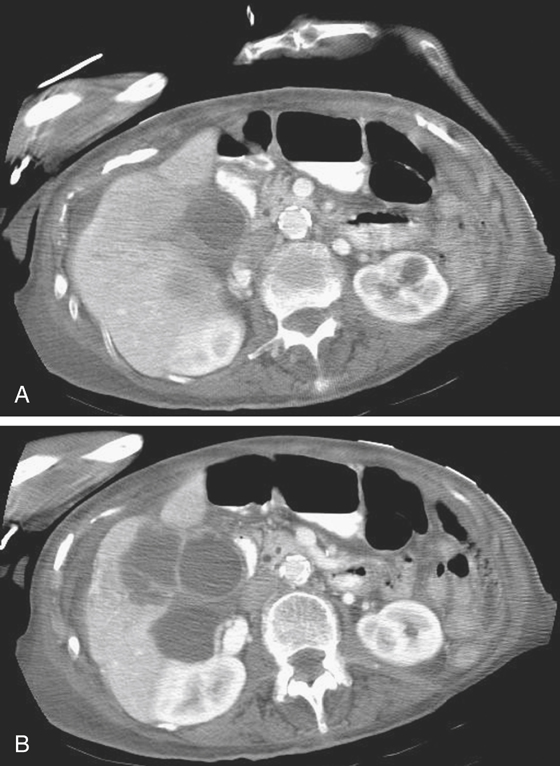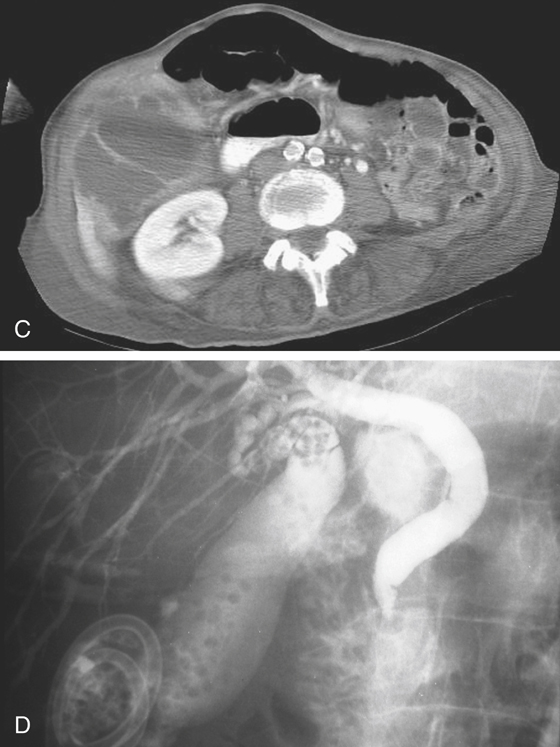CASE 37


History: A 93-year-old woman presents with right upper quadrant pain and sepsis.
1. Which of the following should be included in the differential diagnosis of the dominant imaging finding on figures A to C? (Choose all that apply.)
E. Emphysematous cholecystitis
2. Which of the following statements about acalculous cholecystitis is true?
A. It accounts for less than 1% of all cases of acute cholecystitis.
B. Apart from sepsis and shock, there are no physical signs.
C. Ultrasonography is the investigation of first choice.
D. Mortality is approximately 10%.
3. Which of the following is considered the definitive therapy for acalculous cholecystitis?
A. Resuscitation and antibiotics
B. Percutaneous cholecystostomy
C. Cholecystectomy with drainage of any associated abscess
D. Percutaneous abscess drainage
4. Conditions associated with acute acalculous cholecystitis include surgery, trauma, shock, ischemia, and mechanical ventilation. Which of these conditions is not known to be associated with acute acalculous cholecystitis?
ANSWERS
CASE 37
Acute Cholecystitis and Perforation
1. A, B, and D
2. C
3. C
4. D
References
Kalliafas S, Ziegler DW, Flancbaum L, Choban PS. Acute acalculous cholecystitis: incidence, risk factors, diagnosis, and outcome. Am Surg. 1998;64:471–475.
Cross-Reference
Gastrointestinal Imaging: THE REQUISITES, 3rd ed, p 252.
Comment
Acute cholecystitis is one of the most common of abdominal problems seen in patients presenting to the emergency department. About 90% of cases are associated with gallstones in younger patients, more often women. It is thought to occur as a result of occlusion of the cystic duct with a gallstone, resulting in biliary colic and inflammatory changes in the gallbladder and the famous Murphy sign. Most cases of acute cholecystitis spontaneously resolve in 7 to 10 days, and almost all patients have had prior episodes. A small number of patients go on to more severe disease such as gallbladder emphysema, perforation (see figures), and peritonitis. These conditions are life-threatening situations. Although the condition of acalculous cholecystitis is uncommon, it does tend to occur in older, and particularly in male, patients.







